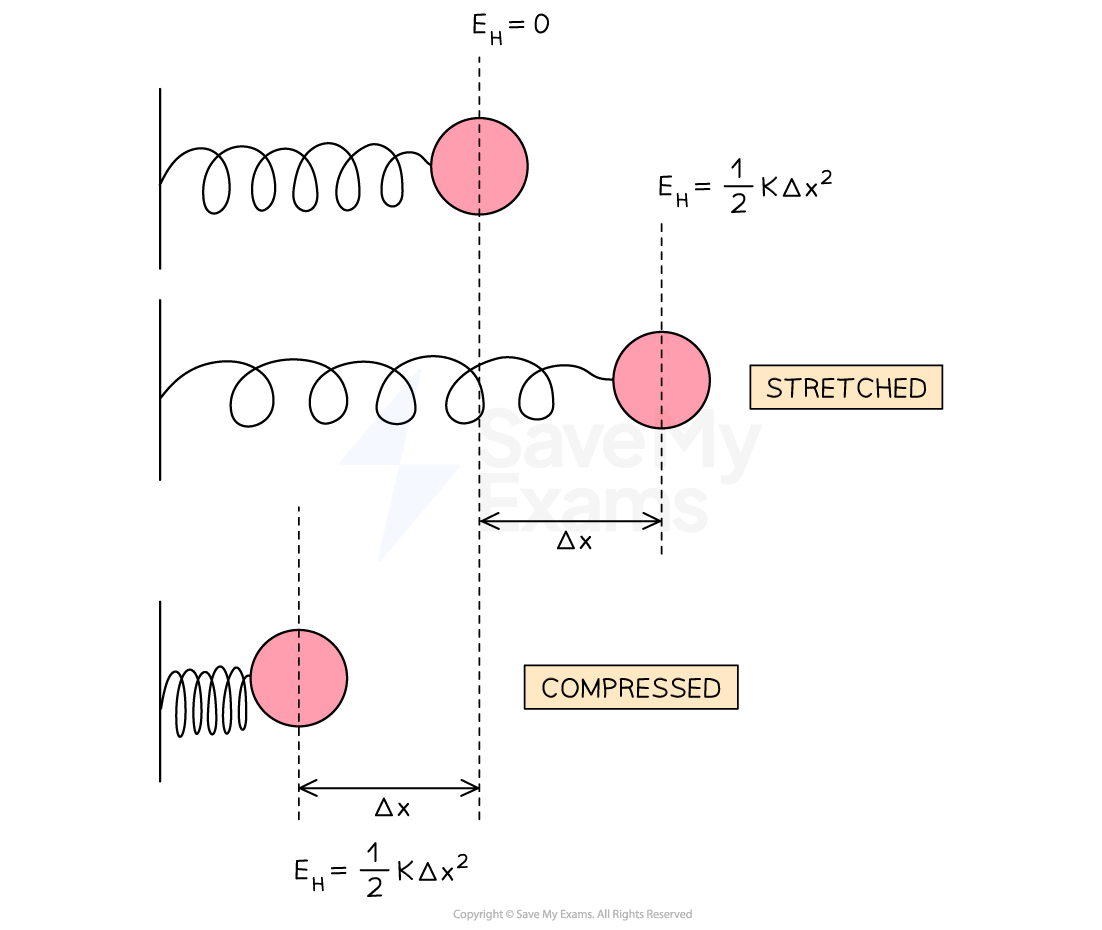Elastic Potential Energy (DP IB Physics)
Revision Note
Elastic Potential Energy
Elastic potential energy is defined as
The energy stored within a material (e.g. in a spring) when it is stretched or compressed
Therefore, for a material obeying Hooke’s Law, elastic potential energy is equal to:
Where:
k = spring constant of the spring (N m–1)
Δx = extension of the spring (m)
This can also be written as:
Where:
F = restoring force (N)
This force is the same restoring force as in Hooke's law:

A spring that is stretched or compressed has elastic potential energy
It is very dangerous if a wire under large stress suddenly breaks
This is because the elastic potential energy of the strained wire is converted into kinetic energy
This equation shows
The greater the extension of a wire Δx the greater the speed v it will have when it breaks
Worked Example
A car’s shock absorbers make a ride more comfortable by using a spring that absorbs energy when the car goes over a bump. One of these springs, with a spring constant of 50 kN m–1 is fixed next to a wheel and compressed a distance of 10 cm.
Calculate the energy stored by the compressed spring.
Answer:
Step 1: List the known values
Spring constant, k = 50 kN m–1 = 50 × 103 N m–1
Compression, x = 10 cm = 10 × 10–2 m
Step 2: Substitute the values into the elastic potential energy equation

You've read 0 of your 5 free revision notes this week
Sign up now. It’s free!
Did this page help you?
